Bohaterowie na morzu
Los zaginionego na Morzu Północnym okrętu ORP “Orzeł”.
(more…)
dr Hubert oraz kmdr por. rez. Bartosz Zajda w wywiadzie dla TVN24 o poszukiwaniach OPR Orzeł
https://www.youtube.com/watch?v=ZPxAzkJLSBQ&spfreload=10Wywiad Tomka Stachury i dr inż. Benedykt Hac w wywiadzie dla TVN24 opowiadają o ekspedycji Santi Odnaleźć Orła
https://www.youtube.com/watch?v=vGXG2UPXY_g&spfreload=10
SANTI ODNALEŹĆ ORŁA to ambitny projekt badawczy, który ma doprowadzić do odkrycia miejsca spoczynku wraku najsławniejszego okrętu podwodnego Rzeczypospolitej Polskiej ORP „Orzeł”.
Poszukiwacze zaginionego Orła

Grzegorz Pastuszak z Zamościa uczestniczył w wyprawie, której celem było znalezienie na Morzu Północnym wraku zatopionego w czasie II wojny światowej statku ORP Orzeł, przedwojennej chluby polskiej Marynarki Wojennej. Dla pasjonatów marynistyki, ale też historii Polski, poszukiwania Orła to niemal tak samo ważna kwestia, jak dla wielu pokoleń eksploratorów na całym świecie znalezienie Świętego Graala. Oczywiście znalezienie Orła wydaje się – przynajmniej teoretycznie – przedsięwzięciem o niebo prostszym, co nie znaczy, że łatwym.
Poszukiwania okrętu podwodnego ORP Orzeł, tudzież sprawdzanie, dlaczego zatonął, przez kogo został zatopiony, trwały niemal od końca II wojny światowej. Jednak dopiero w latach 90. poszukiwania były prowadzone na naprawdę wielką skalę, z wykorzystaniem najnowocześniejszego sprzętu.
W latach 90. prowadzono poszukiwania dwóch holenderskich okrętów podwodnych HNMS O-13 i HNMS O-22. W kwietniu 1994 roku bilans wyprawy został podsumowany oficjalnym komunikatem, z którego wynikało, że u wybrzeży Norwegii znaleziono jednostkę O-22, jaka zatonęła w listopadzie 1940 r. Na ślad okrętów ORP Orzeł i O-13 nie natrafiono.
Kilka lat później, w roku 2006, poszukiwania prowadziły polska Marynarka Wojenna w porozumieniu ze swoim holenderskim odpowiednikiem. W tym celu na Morze Północne wyszedł okręt badawczy ORP Heweliusz. Niestety, misja ta nie przyniosła spodziewanych skutków.
W roku 2008 ruszyła Ekspedycja Orzeł BalexMetal, w której wykorzystano jednostkę badawczą R/V IMOR. Udało się jedynie ustalić, że ORP Orzeł natrafił na zaporę minową 16b ani 16a.
W roku 2010 ponownie do akcji wysłany został ORP Heweliusz, sprawdzono 270 km kwadratowych dna Morza Północnego. Wraku Orła nie znaleziono.
Trzy lata później, w roku 2013, Orła szukała ekipa z okrętu ratowniczego ORP Lech. Wtedy poszukiwacze byli prawie pewni, że odniosą sukces. Ale po raz kolejny okazało się, że zlokalizowany wcześniej wrak to nie Orzeł, a brytyjski okręt podwodny HMS J6.
W roku 2014 odbyła się pierwsza ekspedycja badawcza SANTI ODNALEŹĆ ORŁA. Miejsca, gdzie na dnie spoczywa ORP Orzeł nie udało się ustalić. To właśnie w projekcie SANTI ODNALEŹĆ ORŁA uczestniczył Grzegorz Pastuszak. Wyprawa została zorganizowana w dniach 30 maja – 6 czerwca. Brali w niej udział nurkowie, hydrografowie, historycy. Wszystko mieli dokumentować filmowcy i fotografowie.
W listopadzie rusza kolejny etap poszukiwań wraku okrętu ORP “Orzeł”. Badania prowadzi cywilna inicjatywa “Santi odnaleźć Orła”. Działania poszukiwawcze okrętu wojennego, który zatonął na początku II wojny światowej, zapowiada też Ministerstwo Kultury i Dziedzictwa Narodowego.
(more…)
List of crew lost during the last patrol
List of officers ORP ‘Orzel’
Officers
| L.p. | Surname and Name | Degree | |
| 1. | Grudziński Jan | Lieutenant Commander | |
| 2. | Piasecki Andrzej | Naval Captain | |
| 3 | Mokrski Marian | Naval Lieutenant | |
| 4 | Kamiński Henryk | Naval Lieutenant | |
| 5 | Roszak Florian | Naval Captain | |
| 6 | Sosnowski Jerzy | Naval Lieutenant | |
| List of ORP Orzel Crew | |||
| L.p. | Surname and Name | Degree | |
| 1. | Brocki Edmund | Midshipman | |
| 2. | Foterek Wacław | Warrant officer | |
| 3. | Stelmaszyk Józef | Warrant officer | |
| 4. | Kotecki Henryk | Chief petty oficer | |
| 5. | Narkiewicz Władysław | Chief petty oficer | |
| 6. | Mucha Stanisław | Bosun | |
| 7. | Kamecki Aleksander | Bosun | |
| 8. | Kozowy Julian | Bosun | |
| 9. | Dąbrowski Wiktor | Bosun | |
| 10. | Piegza Jan | Bosun | |
| 11. | Brzęczka Jan | Master seaman | |
| 12. | Adamowicz Józef | Master seaman | |
| 13. | Samotus Stanisław | Bosun | |
| 14. | Prokudowicz Bronisław | Master seaman | |
| 15. | Torbus Jan | Master seaman | |
| 16. | Szubert Wacław | Master seaman | |
| 17. | Pokrywka Teodor | Master seaman | |
| 18. | Hetman Wojciech | Master seaman | |
| 19. | Olejnik Jan | Master seaman | |
| 20. | Skarbek Julian | Master seaman | |
| 21. | Janaszak Stefan | Petty officer | |
| 22. | Kasprzak Jan | Master seaman | |
| 23. | Świebocki Ignacy | Master seaman | |
| 24. | Giełdoń Paweł | Master seaman | |
| 25. | Leśniak Edmund | Master seaman | |
| 26. | Sosnowski Zygmunt | Master seaman | |
| 27. | Piechota Teofil | Master seaman | |
| 28. | Prządka Tomasz | Master seaman | |
| 29. | Hałaczek Wacław | Petty officer | |
| 30. | Kapuściński Józef | Petty officer | |
| 31. | Rebizant Henryk | Petty officer | |
| 32. | Krystek Emil | Able seaman | |
| 33. | Jakubowski Wiesław | Able seaman | |
| 34. | Jasiński Roman | Able seaman | |
| 35. | Jarmuż Józef | Able seaman | |
| 36. | Mączarski Mariusz | Able seaman | |
| 37. | Grabowski Henryk | Able seaman | |
| 38. | Czopp Paweł | Petty officer | |
| 39. | Górny Paweł | Petty officer | |
| 40. | Wilwer Zdzisław | Petty officer | |
| 41. | Chojecki Franciszek | Able seaman | |
| 42. | Hagno Roman | Able seaman | |
| 43. | Kłosowicz Józef | Able seaman | |
| 44. | Mońko Zdzisław | Able seaman | |
| 45. | Kühn Maksymilian | Able seaman | |
| 46. | Szal Jan | Able seaman | |
| 47. | Zydroń Piotr Jan | Able seaman | |
| 48. | Nowak Zygmunt | Able seaman | |
| 49. | Gettka Alojzy | Able seaman | |
| 50. | Mazurkiewicz Kazimierz | Able seaman | |
| 51. | Kawa Zbigniew | Seaman | |
| 52. | Uliczny Stanisław | Seaman | |
| 53. | Prociuk Józef | Seaman | |
| 54. | Palowicz Leonard | Able seaman | |
| 55. | Keith D’Ombrain Nott | Lieutenant | |
| 56. | Jones Leslie William | Petty officer (Yeoman of Signals) | |
| 57. | Green William Fordyce | Petty officer | |
Between 27 July and 13 August 2008, during the expedition of the “BalexMetal Eagle Expedition”, a search for the “Eagle” wreck was conducted in the area of the German “16b” mine site. Searches were made using the R / V “IMOR” hydro-detector apparatus and equipment. The search area was based on archival data of the 16b central pile area and water lanes, including possible displacement of the pile due to hydrometeorological factors and the navigational error of miners in 1940.
The area planned to study the area was 300 Mm2 (1030 km2). A list of alleged wrecks, including those provided by the British, as well as catching positions of fishing nets from Norwegian fishermen, were mapped into the designated search area. The results of the search conducted in 2006 by ORP “Heweliusz” and 2005 by the Dutch “Snellius” – looking for the wreck of the missing Dutch submarine “O-13” during World War II.
Searches were started in the central zone of the farm, which was divided into belts of 23 to 38 km in length and 500 m in width, Measurement profiles. During the first days of exploration in the central part of the central zone, a large number of anchor trolleys and a wreck of a commercial ship sunk by a minefield were found.
After five days, the entire central zone and several western and eastern zones were searched, undoubtedly stating that the 16b mine was not responsible for the sinking of the ORP “Eagle” submarine. In this situation, it was decided to complete the further exploration in the area and move to another 5 mm area where another “16a” was located. The new region was searched for three consecutive days. Unfortunately, the wreck was not found here yet.
Sonar measurements have shown that, in most cases, wreck positions mapped to the surveyed area are erroneous and often false. Even multiple sonar surveys and expanding the search to several square kilometers around the map positions did not lead to their location.
At the last stage of the search, the focus was on the route to be beaten by the “Eagle” on June 3 and 4, 1940. The expedition led to a revision of the hypothesis of the alleged sinking spot of one of the two German homesteads, caused by a possible landing on the mine and allowed them to exclude their area from further exploration.

1935
June 21st
The Board of the Naval Defense Funds submits to the Government of the Republic of Poland an amount of PLN 2,902,879.41 and requests the expenditure for the construction of the submarine.
November
Negotiations are underway for the order of the submarine in the Netherlands.
1936
January 29th
On behalf of the Government of the Republic of Poland, Rear Admiral Jerzy Swirski signs a contract for the construction of two submarines with Koninklijke Maatschappij “de Schelde” in Hague.
August 14th
Placement of the keel for a new Polish submarine on the ramp in Vlissingen.
1937
March 30th
Completion of shipboard framing.
May 14th
Completion of hull breach lying.
October 29 – November 2
Assembly of main electric motors on the ship.
1938
January 15th
Baptism and launching of the ship. The godmother of the ship is Jadwiga Sosnkowska. During the launching ceremony, the ship receives the name ‘Orzel’ (Orzel).
April 7 – June 3
Assembly of batteries.
May 3 – June 2
Assembly of diesel engines.
June 25 – July 18
First docking of the ‘Orzel’.
August 23rd
First exit of the ‘Orzel’ into the sea in the Delta Skalda.
September 30 – October 14
The second docking of the ship.
October 21st – November 1st
‘Orzel’ passes torpedo test at Den Helder.
November 12 – December 2
Speed and immersion tests.
1939
January 20th
She leaves dock.
February 2
A ceremonial raising of the Polish flag on a ship.
February 5
‘Orzel’ leaves Vlissingen and go to Poland.
February 7th
Arrival of a ship to Gdynia-Oksywia.
February 10th
Official welcome of the ‘Orzel’ in the Presidential Quay in Gdynia.
1st of June
Captain Jan Grudzinski becomes deputy commander of the ship.
June – August
‘Orzel’ runs patrol cruises.
July 17th
‘Orzel’ becomes the flag ship of the squadron commander.
1939
September 1st
‘Orzel’ leaves the port of Gdynia at 06:30 and goes to the area of her sector.
September 2nd
The ‘Orzel’s crew is witnessing the bombing of Gdynia and the Hel Peninsula.
September 3
According to commander of the ship, from 2 a.m. to 6 a.m. she lies at the bottom, at a depth of 15-16m. Then she patrols in the vicinity of Hel. According to the second scenario, ‘Orzel’ spent most of the day at the bottom, emerging at dusk. At 22:00, during a direct naval meeting, an information is exchanged with commander of ORP “Wilk”.
September 4
The ‘Orzel’ leaves the designated sector and goes to Gotland.
September 5
The crew is carrying out repair work on damaged ballast tanks.
September 6
Supervision along the coast of Gotland. Detection of unarmed ship “Bergen” or “Bremen.
September 7th
She conducts a patrol between Gotland and Estonia. ‘Orzel’ connects with ‘SEP’ through the radio.
September 8th
Health worsening of the ship’s commander.
8-12 September
According to the commander of the ‘Orzel’, she was carrying out the patrol in the Brüsterort Cape where she arrived at the break of dawn on September 8. According to the second scenario, the ship was between Gotland and Estonia. On September 10, the ‘Orzel’ sends a report to the commander about the Squadron Captain’s disease, which prevents him from commanding the ship. In response, the fleet commander recommends to dropp the captain off in a neutral port and act under the command of his deputy or approach to Hel to replace the commander. Second Lieutenant Commander H. Kłoczkowski decides to call at Tallinn.
September 13th
Health worsening of the ship’s commander. The ship goes to a distant Tallin.
September 14th
At about 21:30 ‘Orzel’ enters the Tallinn’ stead near the Paljassar peninsula.
September 15th
From 1:00 to 3:00 am, another Estonian officer arrives aboard the submarine, who is informed of the compressor failure and the disease of the commander. The Estonian side informs that the German merchant vessel Thalatta is staying in port and that, in accordance with the international law, she will be leaving the port as a first and that the ‘Orzel’ will not be able to leave Tallinn sooner than 24 hours after Thalatta’s departure from the port. Lieutenant Commander H. Kłoczkowski goes to the hospital. In the afternoon, the ‘Orzel’ is interned and deprived of the logbook and maps.
September 16-17
Disassembly and confiscation of ship’s armament, firearms, artillery ammunition, locks and fourteen out of twenty torpedoes.
September 18th
At. 03.00 the ship’s crew disables two Estonian sailors, cuts telephone, electrical cables and hawsers, and ‘Orzel’ starts the maneuver of the departure from the port. During these maneuvers, the ship enters the bow at the underwater pier and temporarily becomes immobilized. Estonians open fire from machine guns and coastal artillery. ‘Orzel’ descends from the underwater obstacle and leaves the port. The ship’s commander informs Hel with an open text about the escape and lack of cipher and maps.
September 19th
‘Orzel’ receives a radio message about her escape and information of German propaganda regarding the accusation of the crew for the murder of two Estonian guards. On board, navigator second lieutenant Mokrski draws handwritten maps of the Baltic and Danish Straits on the basis of the old lighthouse inventory.
September 21st
She arrived near Gotland, where two Estonian sailors were dropped off.
September 30th
‘Orzel’ is heading to the region of Öland island.
1-6 October
She attempts to torpedo the German ship and enters the shoal. While descending from it, she is attacked by a German seaplane.
October 7th
The ship’s commander decides to cross to England.
October 8th
She goes to Falsterbov cape. Then on the middle branch of Sundu to Drogden Canal, where she meets the patrols of Swedish and German ships.
October 9th
The ship passes by Helsingor and Hälsingborg.
October 10th
‘Orzel’ enters Kattegat waters.
October 11th
The ship enters the Skagerraku water.
October 12th
‘Orzel’ heads to the shores of England through the waters of the North Sea.
October 14th
A distinctive signal and position were given from the ship at 06:00. Five hours later at a distance of 30 Mm from the Isle of May ‘Orzel’ meets the British destroyer ‘Valorous’, which leads him to the port of Rosyth.
October 21st
The Chief of Naval Command, in daily Order No. 2a, expressed his highest appreciation to commander of the ORP Orzel – Jan Grudzinski, for all actions taken and praised the officers and crew of the ‘Orzel’.
October 30th
Passage of the ‘Orzel’ from Rosyth to Dundee where it is to be placed in one of the two dry docks at Caledon Shipbuilding & Engineering Company Ltd.
November 17
General Sikorski and Rear Admiral Swirski’s visit in Dundee, for a distinction of a part of ORP ‘Orzel’s crew.
December 1st
End of ship repair and transition to Rosyth. She is incorporated into the Second Flotilla and receives the 85-T tactical mark.
December 10th
Award of the Distinguished Service Order given to the Captain J. Grudzinski.
December 29 – January 1
‘Orzel’ takes part in the escort of a convoy from Lerwick in Shetland to Bergen.
January 1-4
The ‘Orzel’ along with other escort ships carried the convoy from Bergen to Firth of Forth.
January 18-27
‘Orzel’s first independent patrol
February 10-23
‘Orzel’s second standalone patrol
February 26th
Visit of King George VI in Rosyth, meeting and talks with captain J. Grudzinski.
March 5-17, 1940
The third independent patrol ‘Orzel’.
April 3-18, 1940
‘Orzel’s fourth individual patrol. April 8, scuttle of the ‘Rio de Janerio’.
April 28-May 11, 1940
‘Orzel’s fifth independent patrol.
May 23?
‘Orzel’s sixth individual patrol, during which she disappeared in unexplained circumstances.
June 12th
Navy Administration of Republic of Poland issued the following message:
Due to lack of information and no return from patrol within the deadline, the submarine ‘Orzel’ of the Republic of Poland should be considered lost.
ORP ‘Orzel’ became famous in the world both due to the accomplishment of her crew in 1939, escaping from internment in Tallinn and breaking to Great Britain through the Baltic without a map, and because of its excellent combat and technical parameters and quality of workmanship which the Dutch shipyards were known from. She was designed and built as a modern, heavily armed ship, characterized by long autonomy and excellent combat qualities.
At the basis of the structural assumptions of the type were the views of the Polish wartime doctrine in force in Poland in the mid-1930s, as well as the previous (not easy) experience with the operation of three WILK submarines built in French shipyards. It should be emphasized that at that time, as a country, we did not have the experience of conducting naval warfare, and the bases of doctrine of war were based on the experience of current Naval Commanders gained in service in third-country fleets. Of course, the geopolitical situation of the Second Polish Republic, was taken into consideration in the best possible way, as well as the progressing rapid development of military technology, including the formation of new types of formation and armaments. There were also taken into consideration the specifics of the country’s expected threats and concluded military alliances and sea area on which new ships were to operate and the resulting assumptions of the strategy, planned for maritime operations.
From the 1920s, Polish staff officers perceived (which may be somewhat surprising today) as the most real and closer in time the USSR aggression, subsequently the threat of the German state was taken into consideration. As a main task for future submarines included aggressive action, such as active combat against enemy shipping, in case of the German side from Szczecin and Swinoujscie ports to East Prussia, and in the event of a conflict with the USSR in the South-eastern part of the Baltic Sea.
There was also the possibility of underwater submarines to carry out the task of counteracting the enemy’s forces threatening delivery convoys from allied states even to the Danish Straits.
The concept of new submarines was also influenced by the geographical conditions of the reborn Polish state and the resulting shortages associated with the lack of a maritime base, which could only be served by the port of Hel. The possibility of using the Gdynia port to supply submarines in war conditions, was excluded because of the overwhelming threat posed by the antisubmarine and undersea warfare forces, including the air forces it sailed along shallow coastal waters.
The use of the port of Hel, in the absence of proper support of well-developed coastal artillery and aviation, also did not seem easy. It was anticipated that combat operations should be conducted in a long-term detachment from Hel’s operational base, as well as independent action in extremely distant parts of the Baltic Sea. At the same time, the possibility of using new ships for mine tasks was reduced, as three Polish submarines WILK were capable of carrying out such activities.
This assumption was subordinated to the concept of expansion of the war fleet, resulting in the preparation of a technical specification of a new submarine, as a heavily armed torpedo-type unit of very high autonomy capable of conducting combat operations far from the operational base.
Unfortunately, in the reality of the war after September 1, 1939, concerns about the effective capacity of submarines in Polish bases, in view of the rapid elimination of the Maritime Aircraft (which may have provided little support) and the total dominance of the Luftwaffe over Maritime area, found complete confirmation.
For the approximation of the technical parameters of the ‘Orzel’ type ships, it is best to refer to material sources, in particular to the already mentioned technical specifications of the ship, as well as to the contract signed with the contractor. In the document annexed to the agreement concluded on January 29, 1936 between the Government of the Republic represented by Rear Admiral J. Swirski and the shipyard N.V. DE KONINKLYKE MAATSCHAPPY “DE SCHELDE” * “for the supply of two torpedo submarines (…)” entitled “SPECIFICATION FOR A TORPEDO SUBMARINE FOR THE POLISH NAVY” we find the following tactical and technical assumptions for future ships:
(* – original spelling)
Length: 84 m (for better visualization of ship size just imagine that it corresponds to the height of a 28 floor building!)
Width: 6.70 m
Draft: with full equipment 4.17 m
Surface displacement: 1 110 m3
Submerged displacement: 1 473.5 m3
Ship propulsion
It was made up of two diesel engines 6QD 42 Sulzer diesel with a total power of 4740 HP, which were planned to be licensed by a Swiss company in the Netherlands and two electric motors of Brown-Boveri DC up to 180V with a maximum power of 550 HP each, which (according to specifications) were from the factory Rohn-Zieliński company, in fact, they were supplied by the Swiss company. The power supply of the motors was to have two battery packs (each of 100 cells type P.M.25 with voltage of 6V), which were ordered to be made at Polish factory- “Tudor” S.A.
Sea and Colonies – advertisement of the electrical supplier for the ‘Orzel’, Factory “Tudor”.
Surface Speed: The maximum surface speed was stated in the specification in 20 knots. As the sea trials showed, effected before the ship’s reception, obtained on the so-called ’mile measurement’ the actual mileage of the unit only slightly diverged from the assumed mileage of 19.4 knots.
Underwater Speed: In submersion, the ship was to be capable of developing a maximum speed of 9 knots, which was achieved. The assumed economic speed was 5 knots, at which the range was determined at 100 Mm.
Autonomy
About the so-called autonomy of the ship (the ability to operate uninterruptedly as separate from the bases), which was to be 90 days, was determined both by the size of armaments, provisions and propulsion. In this scope, specification included the following parameters of the ordered ship:
Fuel supply: In seven tanks, the vessel was to hold 76.5m3 of diesel fuel, the specification reserved the possibility of using two ballast tanks as a reserve fuel tank. The total amount of diesel fuel was then increased to 123.5 m3. In order to avoid the comments of the meticulous readers, in this place is worth indicating the discrepancies appearing in the specification on the capacity of diesel tanks, as there is included that it has 67.5 m3 and the capacity of additional tanks (ballast No. II and III) together had 130.5m3. Data included in the “CONTRACT for the supply of two Torpedo-Submarines of 1100 tons to the Polish Navy” confirm the ship’s fuel reserves to be: 67.5 and 123.5 tons.
Capacity of lubricating oil tanks: defined as 19 m3 (total, that is also for overworked oil), in other place of specification we find a tank capacity of 13.4m3 and the weight of lubricating oil reserves is set at 11 900 kg.
Fresh water supply: according to the specification, the vessel was to have a reserve of fresh water in the amount of 6m3, in the shipbuilding plans it was specified that two fresh water tanks with the capacity of 3.7 m3 and 1.4m3 were provided as well as the sanitary water tank of 4.6 m3. This inventory proved to be insufficient, as the crew suffered during the passage from Tallinn to the shores of Great Britain. The specification included the possibility of obtaining distilled water during the cruise (necessary even for the operation of electric cells) using for this purpose heat from the exhaust gases of Diesel engines. It was planned that the crew would consist of 5 officers and 51 crew members! There were also 4 reserve seats for officers. Under wartime conditions the actual cast of ‘Orzel’ reached 63 people.
Range of swimming: it was determined at 7 000 Mm at economic speed of 10 knots (it should be realized here that the extent of meridian of the Baltic Sea is 1/10 of this distance, measuring just over 700 Mm).It is worth mentioning the parameters of the ship which are important due to the planned way of carrying out combat tasks, such as the time spent under water (planned to swim in the water position during combat tasks during night time only), immersion rate – especially important in case of need to avoid air attack or, in case of surprise by the enemy submarine, or finally the immersion depth that results in the unit’s operational capacities and the ability to avoid and minimize the effects of deep-sea attacks.
In the ship specification we find the following data:
Continuous underwater time: 20 hours with the speed of 5 knots.
Emergency immersion time: the contractual time of an emergency immersion was set at 45 seconds, and the actual immersion time was 50 seconds. It was a pretty good value, although the enemy ships were capable of making an emergency immersion even in 30 seconds.
Depth of immersion: in a contract, it was agreed for 80 meters, at the same time specifying the maximum immersion depth of 100 meters. From the information recorded about the battle patrols we know that in practice ‘Orzel’ almost reached the latter value by descending (contrary to the intentions of the crew) to a depth of 97 meters. Although not tested in practice, the design of the ship which pressure hull (rigid) was made of the plates 14 millimeters thick (near the tower 16mm), reinforced with additional channel bars measuring 160 mm x 65 mm placed every 550 mm and profiled angle plates, let us suppose that this depth was still far from the actual maximum immersion of the ship. At this point it is enough to refer to case of German warships, whose hulls made of plates 16.5 mm thick withstand pressure at depths exceeding 200 meters.
An innovative solution in the ship’s construction was to place the frames on the outer side of the hull by giving additional space inside the hull without increasing its diameter.
It is interesting that the authors referred to in this section, describing the steel parameters to be applied to the “safety factor” analogous to that of the famous Dutch cruise ship K XVIII, which at the turn of 1934/35 crossed alone the distance of 23,500 nautical miles from the Netherlands to Surabai, Java, Dutch India.
Armament
The ship was equipped with 12 torpedo tubes, with the caliber of 550 mm (torpedoes of French production), with the possibility of using 533.4 mm calibration inserts (torpedoes AB of British production).
It was planned to place 4 fixed launchers at the bow and four at the stern of the ship, as well as a pair of rotating torpedo tubes mounted on the pressure hull in the deck, before and behind the ship’s kiosk. The torpedo volume was set at 8 pieces. The unit was equipped with so-called a discreet shotgun apparatus that allows to shoot torpedoes from a submerged ship without betraying the position by the air bubbles produced during firing torpedoes.
It was planned to equip the ship with a cannon of the Swedish ”Bofors”, caliber 105mm wz.36 (L40) caliber, which was placed on a rotating base in front of the kiosk, shielded with a characteristic construction to protect the crew from the waves, that were rotating with the gun. The operation of the rotary mechanism can be observed unfortunately only in the few preserved photographs. The stock of ammunition for the cannon in battle conditions was 125 pieces. The design of the cannon allowed 12 to 15 shots per minute. The canopy of cannons set up in front of the kiosk along with the motorboat cover just behind the kiosk was the characteristic and unique shape of the ship. The ‘Bofors’ of 105 mm caliber from the twin vessel ORP ‘SEP’ can now be viewed at the Museum of the Polish Military Technique in Warsaw.
In order to protect the submarines from the air forces warfare it was planned to equip the unit in a twin-engine anti-aircraft gun 40mm wz.36 (L60) also produced by Swedish factory “Bofors”, retracted in a hermetic well located in a kiosk. The rate of fire of a single cannon was 120 bullets per minute. It is worth noting that the cannon, when needed to be used automatically, using a hydraulic system, was to be pulled out of the well with service, which allowed it to be used immediately. The ammunition stockpiled for the duration of military operations was 1200 units.
Due to the fact that at the beginning of the thirties, the heaviest machine gun (nkm) was selected for the polish army, which was to be the French Hotchkiss rifle cal.13,2 mm wz.30, as provided by the literature of the subject, it was also intended to equip the ship in this type of double compressed machine gun. It was intended to be placed on a sea side base, labeled R4SM (sous-marin). The R4 was the naval base used on surface ships, it was placed i.a on Polish destroyers (ORP BURZA and ORP GROM). The base for submarines, although the indication would indicate that it was merely a modification of the R4 base, was markedly different. However, both the prepared design plans and the preserved photographs of the ships do not indicate that at any time this type of heavy machine gun was on board of ‘Orzel’ or twin ‘SEP’.
Marine base of twin-engine Hotchkiss 13.2 rifles intended for submarines. Source: P.Bosinski “Types of bases for Hotchkiss HMG caliber 13.2 mm”

A photo showing a compressed machine gun 13.2 mm Hotchkiss on the sea side base R4.
It is worth mentioning that the selection of the type of armament caused future problems, which involved the removal of the locks from the Bofor cannon and the combined anti-aircraft guns during internment in the port of Tallinn. After fleeing successfully to Great Britain, ‘Orzel’ was deprived of her full combat capability for months, because, despite diplomatic efforts, new locks were able to be brought from neutral Sweden probably only after the fifth, the penultimate patrol of the ship. A unique film, featuring scenes likely to test-fire anti-aircraft guns in May 1940, can be viewed using the link in the Gallery tab.
Based on the information contained in the memoirs of the participants of the patrols performed by ORP ‘Orzeł’, archival documentation and preserved photographs, it can be determined that during the service to the Polish Navy in the United Kingdom the ship was additionally equipped with the following rifles:
Lee Enfield caliber .303 (7.7mm) equipped with a ejector so-called the grenade launcher, at the disposal of the signaling officer, who used it to fire colored signaling candles to identify the ship in contact with surface or air units tend to combat submarines subordinated to the British command. For the firing of a smoke bomb or grenade in this type of weapon, special cartridges without the bullets were used.
In addition, there were two automatic machine gun Lewis caliber 303 mounted on the bases on opposing sides of the combat deck of the kiosk which until the time of bringing the locks to the “bofors” in practice fulfilled the role of the only anti-aircraft defense of the ship. It is worth remembering that despite the modest caliber of the rifles, the ‘Orzel’s crew during their fifth combat patrol managed to fend off (and in principle delay) an air attack and carry out successfully an emergency immersion, avoiding the bombs which were dropped.
Lewis machine gun, caliber 303. Source: www.wikipedia.pl

Compressed Lewis caliber 303 on one of the Polish destroyers in the UK.
Recalling the records of the Contract, it should be added that, without specifying the type of weapon, it was envisaged to place on board of the ship, 5 guns and the same amount of handgun with ammunition. For machine guns, the specification records determined the level of ammunition reserves for 10,000 items.
Among the interesting technical details that may interest the reader, it is worth describing the fact that the ship was deprived of the so-called side keels, which when swimming in a watery position, under unfavorable weather conditions, resulted in such unequal rocking of the ship that even the toughest members of the crew suffered from seasickness. The hull of the ship, however, had features unseen in the existing constructions, which was due to the wide application of welding to the joints of structural elements, including the hull breach, (so far, the dominant joining technique was riveting).
It was also equipped with welded watertight bulkheads; the same method was used to combine the elements of the kiosk building. A wide use of welded steel resulted in significant relief of the unit and increased resistance to the forces acting during the explosion of deep cargoes which the ship was attacked by.
At that time, the new was equipping the ship with hydraulically controlled mechanisms, including the control of the vent flaps of the ballast tanks, the possibility of their and other mechanisms simultaneous control from one point of the ship. The hatches were steered in the same way. Since then, hydraulic type of steering has become widespread in constructed submarines, replacing more unreliable electrical steering. Hydraulic pump drive for the same reasons was carried out using compressed air previously stored for this purpose in special tanks, providing timely efficiency of the vessel in the absence of electrical power supply. Of course, steering by any other mechanism, vital to the existence of the ship, was doubled, allowing their manual service, in the event of malfunction.
The ship had good living conditions for the officers and crew, and in the specification, we find also Electrolux refrigerator provided among the basic sanitary equipment.
On photographs of the ship made during the celebrations in which the ‘Orzel’ took part, it can be seen that at the back part of the ship’s tower a bronze bell weighing (according to specifications) about 20 kg was placed with the ship’s name and date of construction. From the same metal the letters of the ship’s name fixed on the kiosk building were also made but in the combat conditions remained painted with protective color.
As a curiosity, it should be added that in order to increase the recognition capabilities of the ship, the placement of a scout hydroplane on board was considered but this idea was dropped due to the consequences of this solution, in terms of displacement and stability of the ship, the need for space for additional crew members, storage of the spare parts and aviation fuel. Not insignificant was also the anticipated impact of increased development on the possibility of detecting a ship.
To sum up, it should be noted that expressed by the Shipbuilding Department of the Navy, the construction of submarines of ORZEL type, realized by the Dutch shipyard, caused that “Orzel” and “Sep” belonged to some of the most modern submarines at that time, equaling and often exceeding the tactical and technically parameters of the newest units put into marine service of warring parties. They were superbly armed, had excellent performance, and their stockpiles allowed them to stay in the sea for long periods of time without contact with the operating bases. Upon arriving to the United Kingdom, both among the ordinary sailors, their commanders, and civilians, the ORP ‘Orzel’ aroused unmistakable admiration, not only for the accomplishment of the crew, but also for her modern and prefect design. This admiration has been reflected in the numerous press publications that have appeared since the ship’s successful escape to Great Britain, during her subsequent service in the Polish Navy, and even long after her mysterious disappearance.


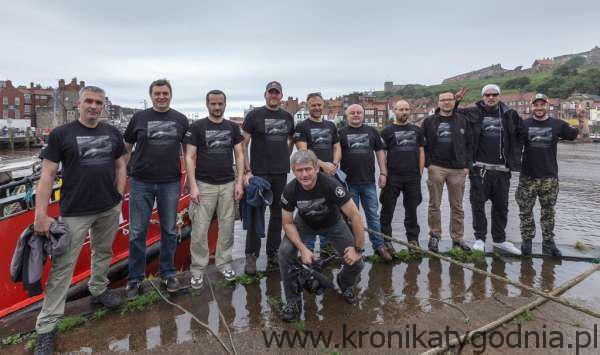
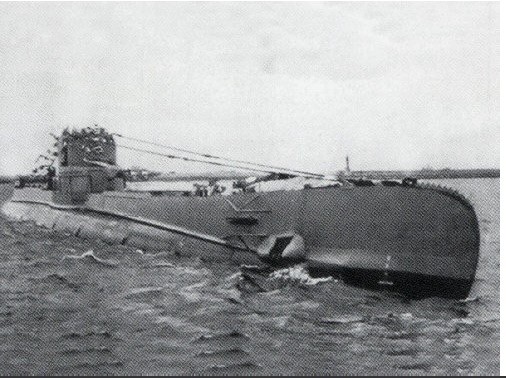
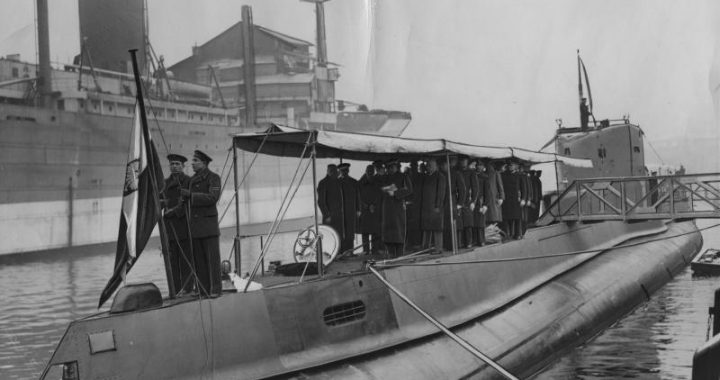
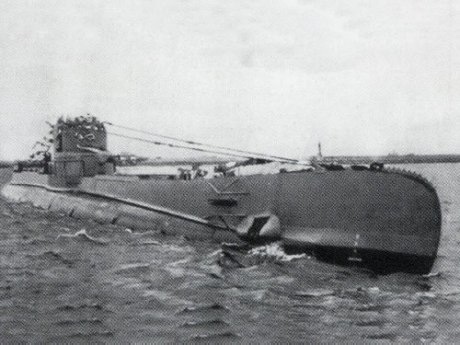
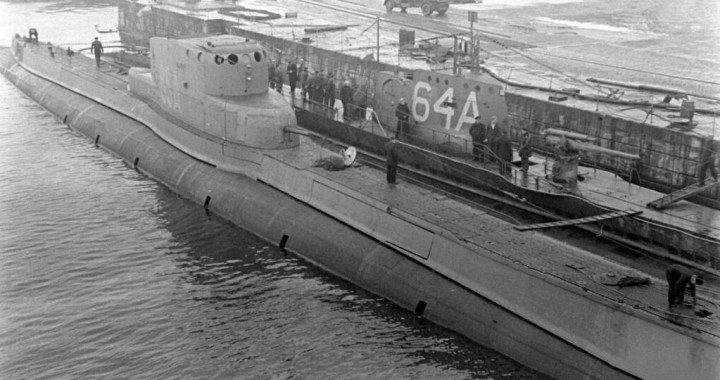
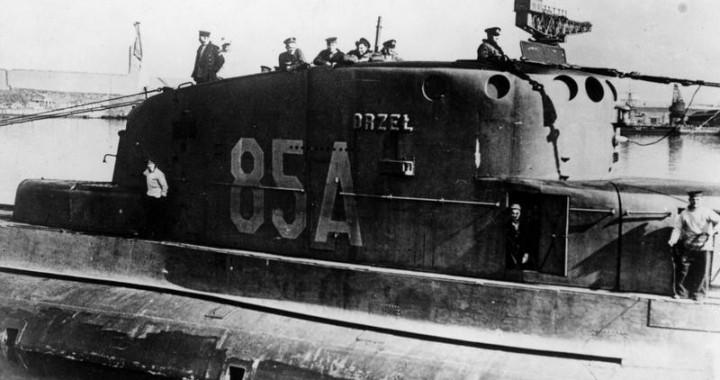



You must be logged in to post a comment.